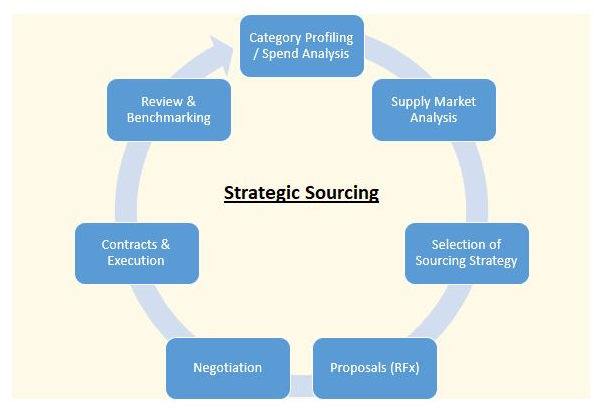If you work in supply chain management, chances are you’ve heard of strategic sourcing; it’s one of the most common supply chain trends today, though that wasn’t always the case. The truth is that there isn’t just one source that can tell you everything you need to know about strategic sourcing, but there are several different ways to define the process. Here are the seven steps of strategic sourcing as they were outlined by industry professionals at Supply Chain Connection in 2019, so read on to learn more about this important process!
Step 1. Define Strategic Sourcing
The first step in a strategic sourcing process is to define what strategic sourcing means to your organization. Often, different people within an organization will have different definitions of strategic sourcing depending on their roles and responsibilities. One person’s strategic sourcing process might be focused on improving operational efficiency, while another person might be focused on lowering costs by awarding contracts to vendors that offer lower prices. A third person may focus exclusively on helping your organization achieve its objectives through supporting social initiatives around sustainability and green products. To create a compelling vision for strategic sourcing at your company, it’s important that everyone agrees upon a common definition before starting a procurement initiative.
Step 2. Determine Procurement Strategy
A review of a global sourcing companies procurement strategy is an important starting point to determining sourcing strategies. This involves taking a good, hard look at your current business model, and asking what it is that you want from suppliers. With regards to strategic sourcing, some companies prefer to use a proactive approach, while others opt for a reactive method. Each has its benefits and drawbacks, but companies should ultimately aim for a balance between both approaches that best suit their needs.
Step 3. Select Goods/Services/Projects To Be Procured
In order to minimize your overall costs, you will need to select products and services carefully. In fact, if you’re able to identify an item for which there is a high demand from both internal and external customers, you may be able to negotiate a volume discount on that product or service. This is known as vertical sourcing and can help improve your bottom line significantly. Additionally, it’s also important that you consider which suppliers can provide high-quality goods and services at competitive prices – particularly if you plan on conducting business with them over a long period of time. You should also try to use multiple suppliers so that you aren’t too dependent on any one particular source.
Step 4. Create RFP(Request For Proposal) Template
An RFP is an important first step in making sure you end up with a solution that fits your needs. It’s an opportunity to thoroughly review candidates, set your expectations and help ensure everyone involved understands what’s expected. You may need to do more than one, but it’s worth taking some time to create a good template for each one so you don’t have to reinvent the wheel each time. When done right, an RFP can be an extremely useful tool for any organization.
Step 5. Invite Vendors To Bid
Vendors who receive your Request for Proposal will either answer your questions or not. If they don’t, it is often a sign that they are not interested in working with you and you should move on to other vendors. Vendors who do respond to you questions will usually provide bids and frequently proposals as well. A bid is simply a vendor’s price to perform a certain type of work. A proposal outlines how that price was determined and proposes alternatives if your desired project changes. Both give you information about whether or not working with a vendor would be worth it at all, but especially how competitive their prices are compared to others.
Step 6. Evaluate Bids
As part of your selection process, review bids and shortlist procurement consulting firms you like to move forward with. Although it’s tempting to narrow down your list to one or two providers that seem like a good fit, resist that urge; you want a pool of suppliers from which you can choose multiple options. The more options you have, the better—especially if budgets change or one vendor hits a snag in their bid. Start considering both direct labor costs and overall costs when evaluating bids. For example, if Company A has a lower direct labor cost than Company B but also requires much more equipment and subcontractors for additional services, Company B might be a better option in terms of total cost.
Step 7. Award Contracts
When you’ve finished your market research and received all of your bids, it’s time to award contracts. Keep in mind that even if a vendor can deliver on time and on budget, they might not be the best option for your company’s unique needs. For example, an office supply company with an exceptional track record may still cost too much compared to its competitors. Although it would be tempting to avoid asking for a discount by awarding them a contract, they may offer something different from their competitors that would make them ideal—they could include free shipping or free delivery for one year. By avoiding awarding contracts solely based on price alone, you can find vendors who will give you more value long-term.
